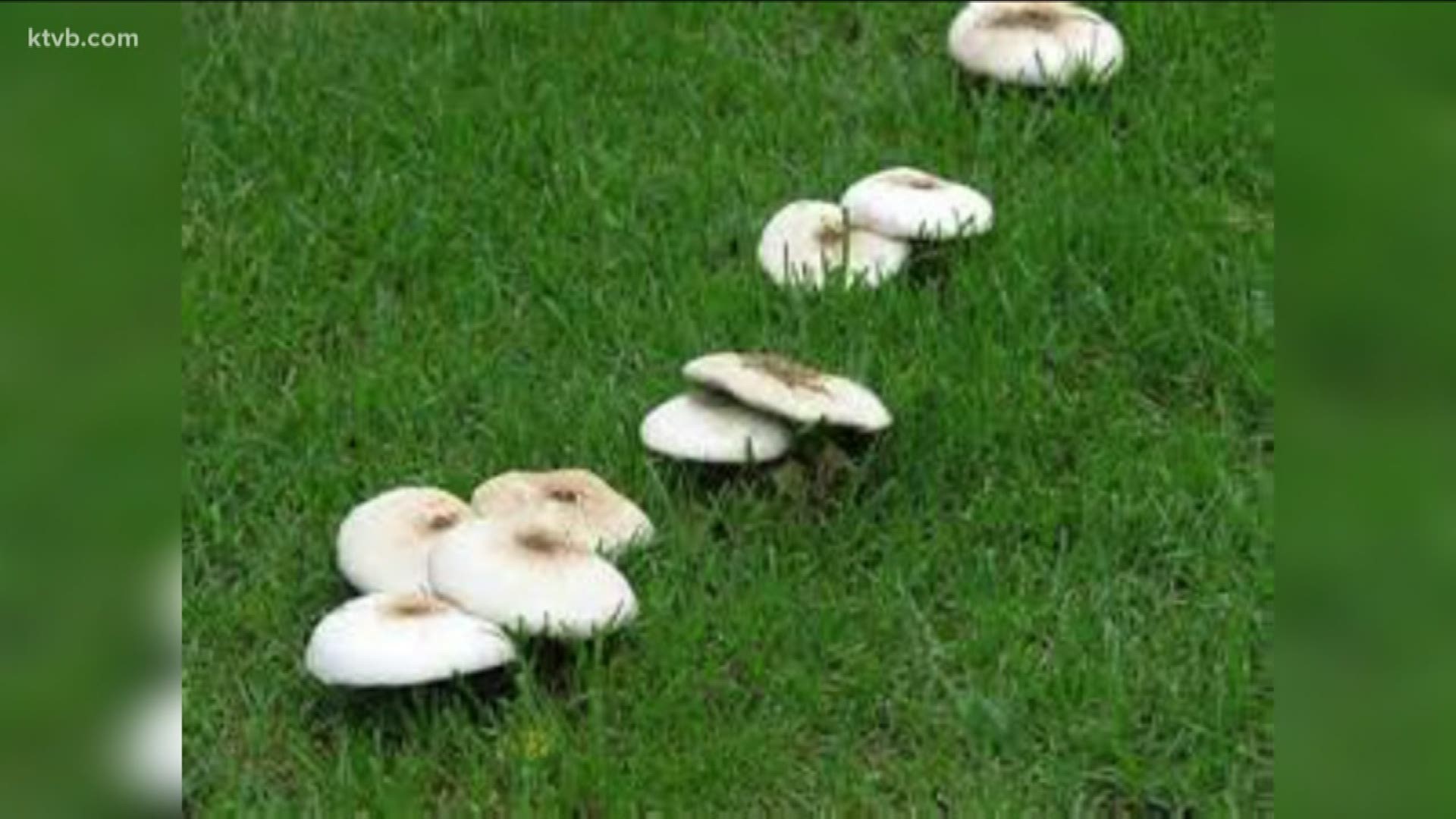With our recent rainy weather, you’ve probably been noticing a lot of mushrooms showing up in parts of your lawn and garden. They’re pretty common this time of year, and you might be wondering if they’re causing any harm to your grass, and if they’re bad for your children and your pets.
Garden master Jim Duthie explains what makes the mushrooms grow, and what you can do about them.
This is the time of year when we start to see mushrooms popping up around the lawn. We’re watering more, and the recent rain and temperature extremes makes for perfect mushroom-growing conditions.
What we call mushrooms are actually the fruit of beneficial fungus that is in the soil. By the time we see them, the fungus is already established underground. When conditions are right, usually moist and cool, the fungus shoots up its version of a flower full of seeds, but with mushrooms we call the seeds spores, and they can be carried by the wind, animals and even on our shoes and lawnmowers.
Mushrooms won’t hurt your grass. In fact, they can actually be beneficial to your lawn. Their extensive root systems help hold water, and they help to break down organic materials and add nutrients to your grass.
But they can be a little unsightly in the middle of a nice green lawn. Most of these mushrooms, or toadstools as we sometimes call them, aren’t the kind we’d want to eat, but if you’re concerned about your pets or small children being around them, it’s not hard to keep them under control.
You can eliminate the visible mushrooms by knocking them over, raking or even mowing them. But that may tend to spread the spores around and lead to more mushrooms growing.
Instead, just pull them up and throw them away. You might want to put them in a bag in the trash, not in a compost pile where the spores can spread. Be sure to wash your hands after handling them.
The best way to prevent mushroom growth is to starve them. Reduce the amount of water that is making the area damp, or provide more drainage. Aerating and dethatching the soil will help.
Rake up leaves, grass clippings, animal waste and other organic material that may decompose and feed the mushrooms. Check for buried pieces of wood or dead roots .
Mow your lawn regularly. Shorter grass dries out faster than tall grass, reducing the moisture that the mushrooms need to grow. But before you mow, make sure to pull up any mushrooms and rake away the pieces so you don’t spread the spores around with the mower.
Applying a nitrogen-rich fertilizer on your lawn speeds up the decomposition of organic material that the mushrooms feed on. And while commercial fungicides may kill the mushrooms, they don’t get down into the soil to kill the fungus that produces the mushrooms.
Occasionally, you may see a circle of mushrooms. That’s called a fairy ring. In most cases, removing the mushrooms and digging or aerating the area will control the mushrooms and eliminate the problem.
The bottom line is that mushrooms won’t harm your lawn, they’re just not very pretty to look at. But a few simple steps to reduce the moisture and organic matter that mushrooms need to grow will help you get rid of them or keep them under control.
Those mushrooms growing in your lawn won’t hurt the grass, but they are unsightly, and you don’t want to eat them, since most of them are poisonous.
And as far as harvesting wild mushrooms, only about five percent of them are edible. A note of caution – don’t harvest and eat wild mushrooms unless you are experienced at identifying the edible ones. Each year, many Idahoans are sickened or poisoned by eating toxic wild mushrooms.
Watch more 'You Can Grow It':
See them all on our YouTube playlist here:

